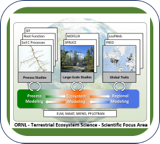Resprouting Responses Dynamics of Schima superba Following a Severe Ice Storm in Early 2008 in Southern China: A Six-Year Study
| Author | |
|---|---|
| Keywords | |
| Abstract |
In 2008, an unexpected and severe ice storm affected the forest of southern China. This storm caused damage in regeneration of an important dominant tree, Schima superba (Gugertree). To study this damage, we set up permanent monitoring plots in an ice-storm-damaged subtropical evergreen broad-leaved secondary forest dominated by S.superba in Jianglang Mountains, China. We surveyed the damage to all trees with a minimum basal diameter of 4 cm and monitored their growth for 6 consecutive years. We analyzed the degrees and types of damage for S.superba and their relationships with resprouting characteristics. The results revealed that the main damage types of S.superba were decapitation (45.45%) and uprooting (28.41%). The distribution percentage for both decapitated and uprooted trees were commonly highest in the range of 10–16 cm basal diameter (BD) size class. A great number of individuals sprouted vigorously after the storm. The mean total sprout number and sprout biomass per tree for S.superba varied by tree BD size class. During the first three years after the ice storm, decapitated trees of larger BD classes produced more sprouts per tree than trees of smaller BD classes. However, the opposite trend was seen in uprooted and leaning trees. There was a trade-off between the total number and length of the sprouts. The difference of mean sprouts number and biomass per tree with size class was mainly related to the damage types. As the recovery progressed since the ice storm, the number of sprouts and sprout biomass in uprooted trees was found mainly on the middle trunk sections of uprooted trees, but in the upper sections of decapitated trees. After six years, the mean number of sprouts per tree, on different parts of the tree and for the three types of damaged trees all declined; however, sprout biomass per tree all increased. The mean number of sprout and sprout biomass per tree on different sections for decapitated trees was always highest over time since the storm. Our study will help to provide data on resprouting ability to develop a predictive model for resprouting. |
| Year of Publication |
2020
|
| Journal |
Forests
|
| Volume |
11
|
| Issue |
2
|
| Number of Pages |
184
|
| ISSN Number |
1999-4907
|
| DOI |
10.3390/f11020184
|
| Download citation |

